|
2011
|
 |

Dance Party
Working from the success of Motion-On-The-Move we
produced an ARM-7 based controller-less dancing game
that mixed motion capture technology with streamed
video producing a plug-in TV console with a sub $50
retail price.
Screen shots and artwork here
|
|
2010
|

 |
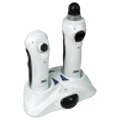
Motion-On-The-Move
A plug-in TV console aimed at the 2nd
world market.
The console integrated an 32-bit ARM-7 CPU, RF
chipsets, 2 wireless controllers (with motion
tracking hardware, G-sensors, and analog buttons)
and SD slot. Motion-On-The-Move shipped with
10 built-in games which provided a mix of 3D and 2D
games covering all the main genres, with additional
games and level-packs being downloaded from the
internet and stored on the SD card. In addition to
providing input on the hardware specification and
design, Playvo designed and developed a simple to
use, but comprehensive API which allowed the Chinese
software development team to quickly and efficiently
produce the games for the unit.
Playvo worked very closely with the Chinese
programmers providing an on-site project management,
technical support and training together with the
tool sets required to complete the games.
Additionally Playvo programmed the 3D games for the
system.
Screen shots and artwork here
|
|
2007
|
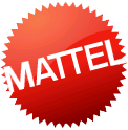 |
Art production tools for a pair of children's
toys for Mattel.
|
 |

Miuchiz-2 (8-bit embedded)
Refactoring and enhancing the Miuchiz
handheld to produce Miuchiz 2 for MGA-E. The
enhancements included production of a BIOS, SDK and
associated documentation to allow external
developers to produce mini-games for the device.
Several of the built-in mini-games were also changed
and upgraded, together with making many enhancements
and optimizations to the general user interface. |
|
2006
|
 |
Miuchiz (8-bit embedded)
Project management of the Taiwanese
programmers; production of the programming tools;
and handheld to PC synchronization program for the Miuchiz
handheld device - part of MGA's Bratz universe. |
|
2004
|
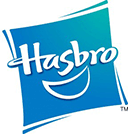 |
An AGB
accessory which allowed Hasbro's Colour Video
Now CD movies to be played and displayed on
the AGBs internal screen. Working with Hasbro's
internal hardware engineers we created an FPGA to
enable the image bitstream to be decoded, enhanced
and transferred through the cartridge port and be
displayed on the AGB's screen. We designed the image
enhancement routines (implement in the FPGA) and
programmed all the AGB user interface code which
included passing back to the FPGA play, pause, etc.
commands. |
|
2001
|
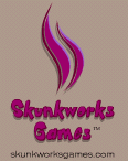 |
QBeez (GameBoy Advance)
A conversion of the popular PC and Internet game. |
|
2000
|


|
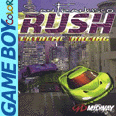
San Francisco Rush 2049 (GameBoy Color).
Initially we where responsible for the
implementation of the front-end menus for the game.
After successfully completing that task, we were
assigned the remaining programming on the project.
This included race modes; jumps; power-ups; sound FX
and music; car AI; implementing different handling
for each of the different types of car; and the
in-game pause menu.
Screen shots and artwork here
|
|
1999
|
| Data Design |
Working
on a prototype PlayStation-1 sports title to provide
a 3d engine (camera and drawing code) for displaying
a variety of stadiums and animated characters. |
 |
A short
term contract to provide a Windows 98 application to
allow the editing of large tile based maps for a
GameBoy title being developed by the company. |


|

Saboteur (PlayStation and Direct-X)
This is a first person game in the Tomb Raider genre
and we where brought into the project to provide
additional PlayStation expertise to the existing
team of programmers who were heavily Direct-X
orientated. Responsibilities included converting the
existing Direct-X front end to PlayStation
high-resolution mode (640x480 at 50 fps) and for
adding the 2D components of the game (inventory,
health bars, pause menu, etc.) to both the
PlayStation and Direct-X versions. Additionally we
implemented PlayStation specific code to handle code
overlays, memory cards, dual shock, and MOD playing.
Screen shots and artwork here
|
|
1998
|
 |
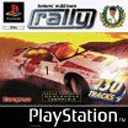
Tommi Makinen Rally (PlayStation PAL)
International Rally Championship (PlayStation NTSC)
I joined the company as a director when Tommi
was about 60% complete. He took over the role of
lead programmer and was responsible for:
optimizing the existing code for speed and size;
implementing foreign language translations;
ensuring the game shipped with-in the time frame
specified by the publisher; master production; and
liaising with the QA departments of both the
publisher and SONY.
Screen shots and artwork here
|
|
1997
|
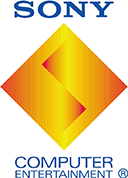 |
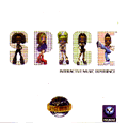
Spice World (PlayStation PAL and NTSC)
Working with-in the contractual restrictions
between SONY and the Spice Girls, I was the lead
programmer with the brief not to produce a game,
but an "interactive experience" to appeal to (the
then untapped) teen female audience.
Charting in the UK Top 20 for over 3 months.
Screen shots and artwork here
|
|
1996
|
 |

Total NBA97 (PlayStation PAL and NTSC/J)
NBA Shoot Out 97 (PlayStation NTSC)
Total NBA was developed by a very small team
internally at Sony. I joined the basketball team
at the outset of the project as 2nd programmer. He
was responsible for rewriting the computer
players' AI used in the '96 version of the game;
managing the statistics of the players and teams;
implementing the icon-passing control mechanism;
memory cards; and completing the in and out game
menus. Also, together with the lead programmer,
master production and liaising with the QA and
Approval departments.
No. 1 in the USA charts for 12 weeks.
Charting in the UK top 20 for approximately 6
weeks, highest position No. 5.
Reviews averaging 90% (Play magazine 92%).
Game review here
Screen shots and artwork here
|
|
Pre 1996
|
 |

Bridge Masterclass With Omar Sharif
The Complete Chess System
Intelligent Strategy Games 10
Go Player Professional
Backgammon Professional
All of these titles were developed with porting
in-mind and released on the Atari ST & TT,
Amiga, PC (in DOS: CGA, Hercules, EGA, VGA, SVGA,
and Windows 3.0 through to Windows 95).
Additionally Go Player was released on
PlayStation 1.
|

